A Hand Lettering Artist’s Guide to Paint Pens & Markers
One of the most common questions I’m asked on a regular basis is what pens are best for hand lettering projects. My usual response is to recommend my favorite go-to tools like the Tombow Fudenosuke and Dual Brush Pens for paper based designs. But what about when you want to take your lettering off the page and use it on wood, canvas, fabric, chalkboards, and more? Water-based pens won’t do the trick for surfaces like those.
Here’s a quick guide to some of the tools I use for non-paper projects. This is by no means everything that’s available on the market, just what I’ve used and can share about firsthand. I’ll give you the pros and cons of each, what surfaces they work on, and a visual example of how they look on a project. Ready? Let’s get started!
PERMANENT MARKERS
Sharpie Fine Point Permanent Marker
This is your standard, everyday Sharpie marker.
THE FACTS:
Available in 41 standard colors plus 3 metallics.
Also available with ultra-fine and chisel tips.
Sold individually or in packs.
WORKS WELL ON:
paper, plastic, metal, wood, painted surfaces, terracotta, glass {non-permanent unless baked}
PROS:
permanent
easy to control
very affordable {24 for $15} and available almost everywhere
CONS:
Will “bleed” color along the grain of untreated wood and fabric.
Doesn’t perform well on textured surfaces like canvas/rough wood because the pigment won’t go down into the crevices.
Can take on a glossy appearance when applied to painted wood.
Tips fray with frequent use.
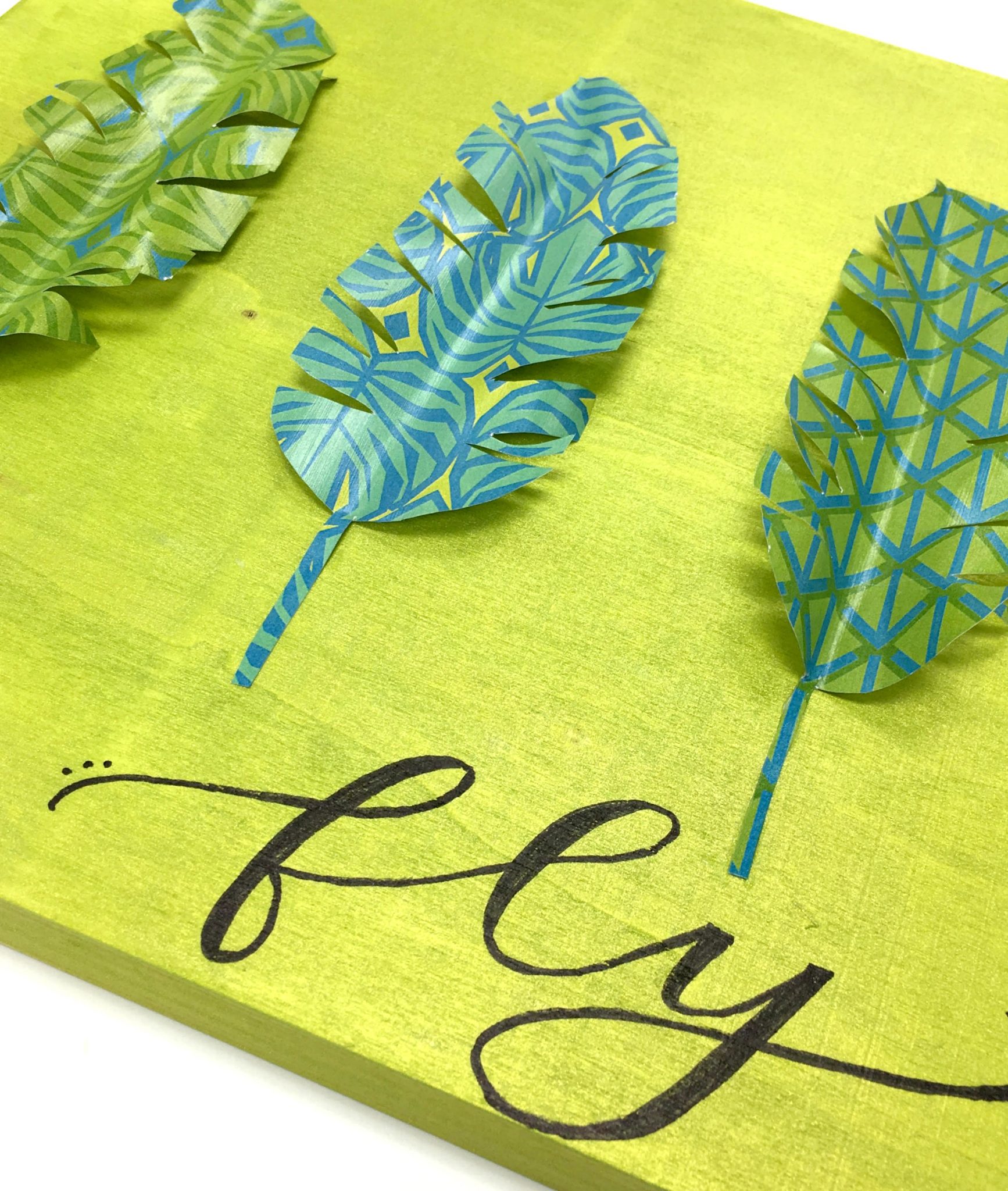
Tombow Monotwin
This is Tombow’s version of a permanent marker for artists.
THE FACTS:
Black
Dual tip: Broad and Fine
WORKS WELL ON:
paper, plastic, metal, wood, painted surfaces, terracotta
PROS:
Two tips in one marker so you can choose the best one for each project or use both, like I did in the sample project below. You can see that I used the fine tip for the print letters and broad tip for the script.
Tips retain their shape well even with frequent use.
Permanent
Easy to control
CONS:
Will “bleed” color along the grain of untreated wood and fabric.
Only available in black.
Not as readily available in stores.
More expensive {$3.39 + shipping}, but you can catch a good sale, plus you’re getting two markers in one.
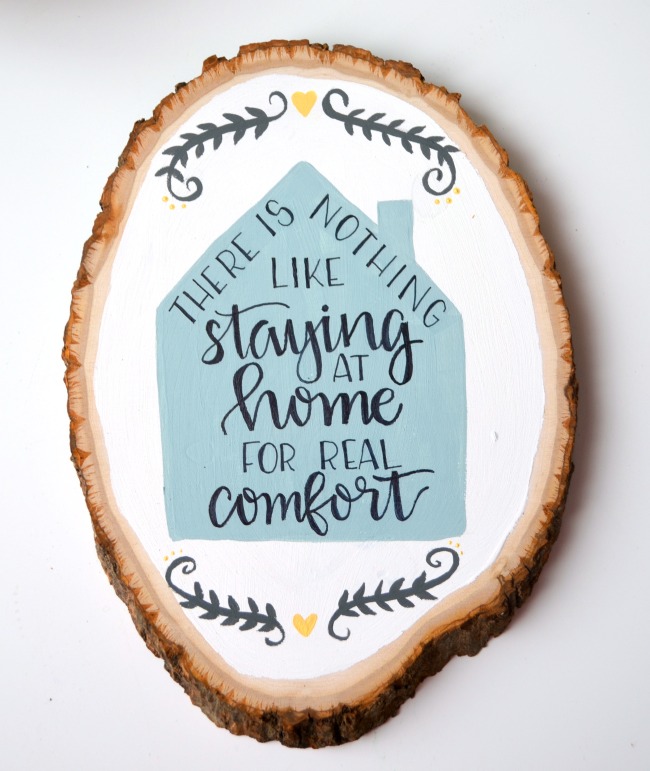
Sharpie Brush-Tip Permanent Markers
These are totally unique in that they are the only thing I’ve found with an actual brush tip that works on surfaces other than paper! ***Except for a “Stained by Sharpie” fabric marker I just found out about but haven’t tried***
THE FACTS:
Available in 12 colors.
WORKS WELL ON:
paper, plastic, metal, wood, painted surfaces, terracotta, glass {non-permanent unless baked}
PROS:
Flexible brush tip!
Control it just like your favorite brush pens.
Permanent
Affordable {12 for $13}
CONS:
Tips fray somewhat quickly, so you lose the fine line of your upstrokes.
Dry out quickly, especially if you don’t immediately cap them.
Takes on a glossy appearance on painted wood.
Brush tip is rather large, so it’s not ideal for smaller projects.

PAINT PENS
Elmers Painters Opaque Paint Markers
Unlike the permanent markers we looked at, these pens are filled with actual paint but with a marker-like tip that allows you to control exactly where the paint goes.
THE FACTS:
Made with non-toxic acrylic paint.
Acid-free & photo safe.
Available in 23 colors including metallics.
Sold individually or in packs of 5.
Available in fine bullet tip, medium bullet tip, chisel tip, and super tip {for large projects}
WORKS WELL ON:
wood, plastic, clay, ceramic, glass, metal, foam board, fabric, terracotta
PROS:
Easy to find in stores {I often get mine individually at Walmart}.
Performs well on textured surfaces such as the wallet shown below.
Tips stand up well to repeated use.
Acid-free acrylic paint won’t damage delicate surfaces.
Lots of color and tip choices.
Dries quickly when applied to your surface.
CONS:
Personally, I find that I go through the ink somewhat quickly.
Sometimes you’ll get a defective one where the tip will fall out, or the paint will ooze out too quickly causing drips and “rivers” on your project. This is not overly common, but has happened to me several times.
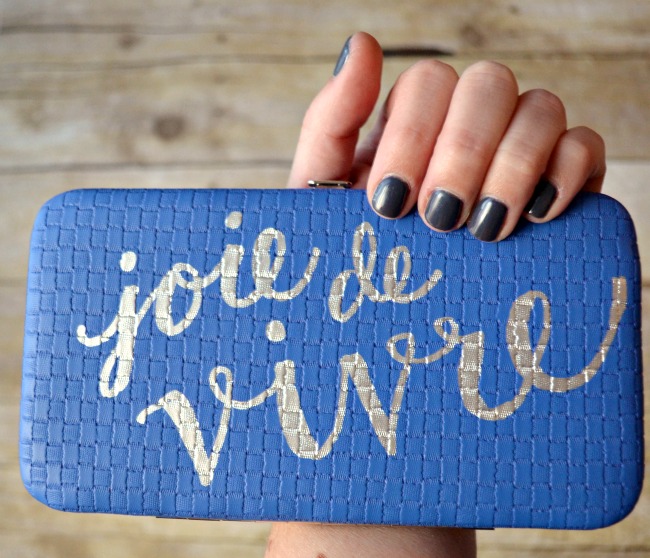
SHARPIE OIL-BASED PAINT PENS
These work in a similar fashion to the Painters markers, but are filled with oil-based paint rather than acrylic.
THE FACTS:
Fine tip is available in 15 colors, including metallics {other tips have less color variety}
Available in extra-fine, fine, medium, and bold bullet tips.
Sold individually and in packs.
WORKS WELL ON:
metal, pottery, wood, rubber, glass, plastic, stone, and more
PROS:
Quick-drying
Resists water, fading, and abrasion.
Good for indoor/outdoor projects.
Great for window art.
Tips hold their shape.
CONS:
Somewhat strong smell.
Not acid-free.
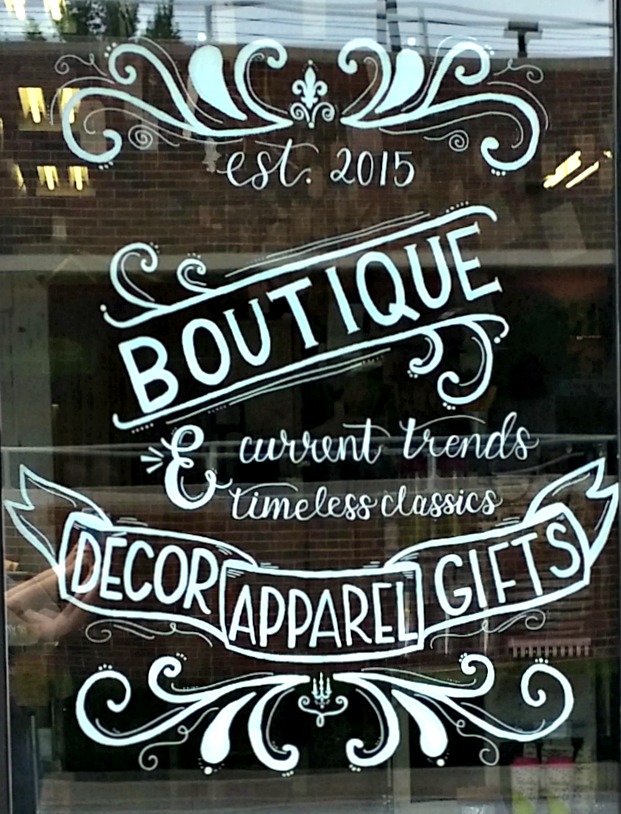
DECOCOLOR ACRYLIC PAINT MARKER by MARVY UCHIDA
Like the Elmers Painters, these markers are filled with opaque acrylic paint.
THE FACTS:
Available in 28 colors, including 6 metallics.
Acid-free, non-toxic acrylic paint.
Available tips: extra-fine, fine, and broad bullet tips, 3 way chisel tip, calligraphy tip, and jumbo
WORKS WELL ON:
wood, plaster statues, foam projects, walls, plastic, paper craft, terracotta, and more
PROS:
Acid-free & safe for delicate surfaces.
Lots of color and tip options.
Easy to control.
Has the look and feel of acrylic paint applied with a brush.
CONS:
More difficult to find in-store.
Slightly more expensive than some competitors.
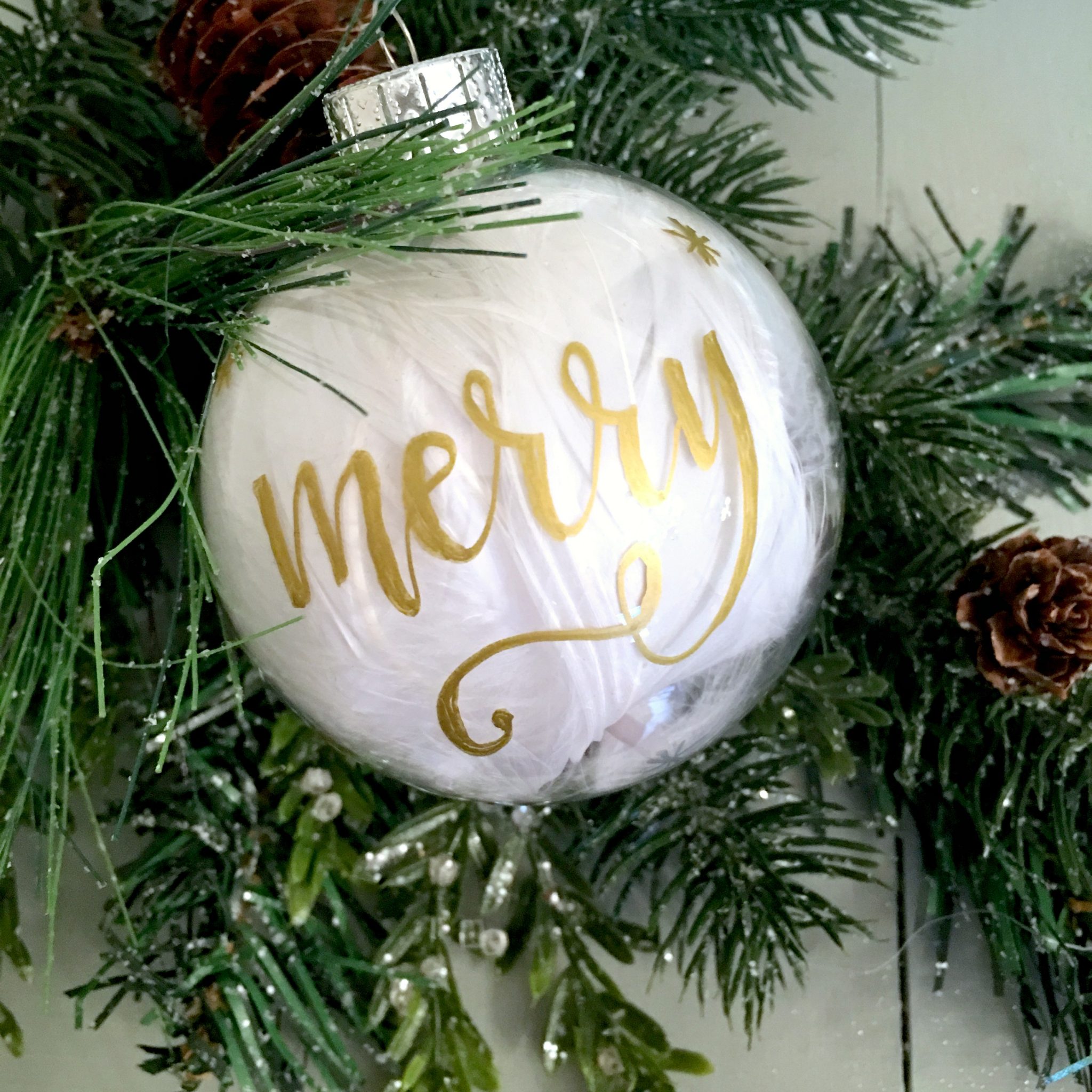
CHALK PENS/MARKERS
AMERICAN CRAFTS ERASABLE CHALK MARKER
If you want the look and feel of a real chalkboard project without the chalk, this is your new favorite tool.
THE FACTS:
Available in 17 colors including pastels, neons, and metallics.
More like a crayon or grease pen than a marker {see the photo above}.
Wet-erasable.
WORKS WELL ON:
blackboards, glass, and mirrors, wood, canvas, and more
PROS:
Gives the appearance of real chalk without any of the mess. See the example projects below and look at the texture in the coloring/writing.
Very bright white & vibrant colors show up well on both light and dark surfaces.
CONS:
Can leave “ghosting” on your surface…may not wipe off completely or easily.
Broad tip that flattens out quickly; not good for detail work or small projects.
Unshaped/constantly reshaping tip makes it difficult to create smooth fine lines.
Personally, I found that I use them up fast. Like with real chalk, the “crayon” will disappear as you use it and you’ll eventually have nothing left to draw with.
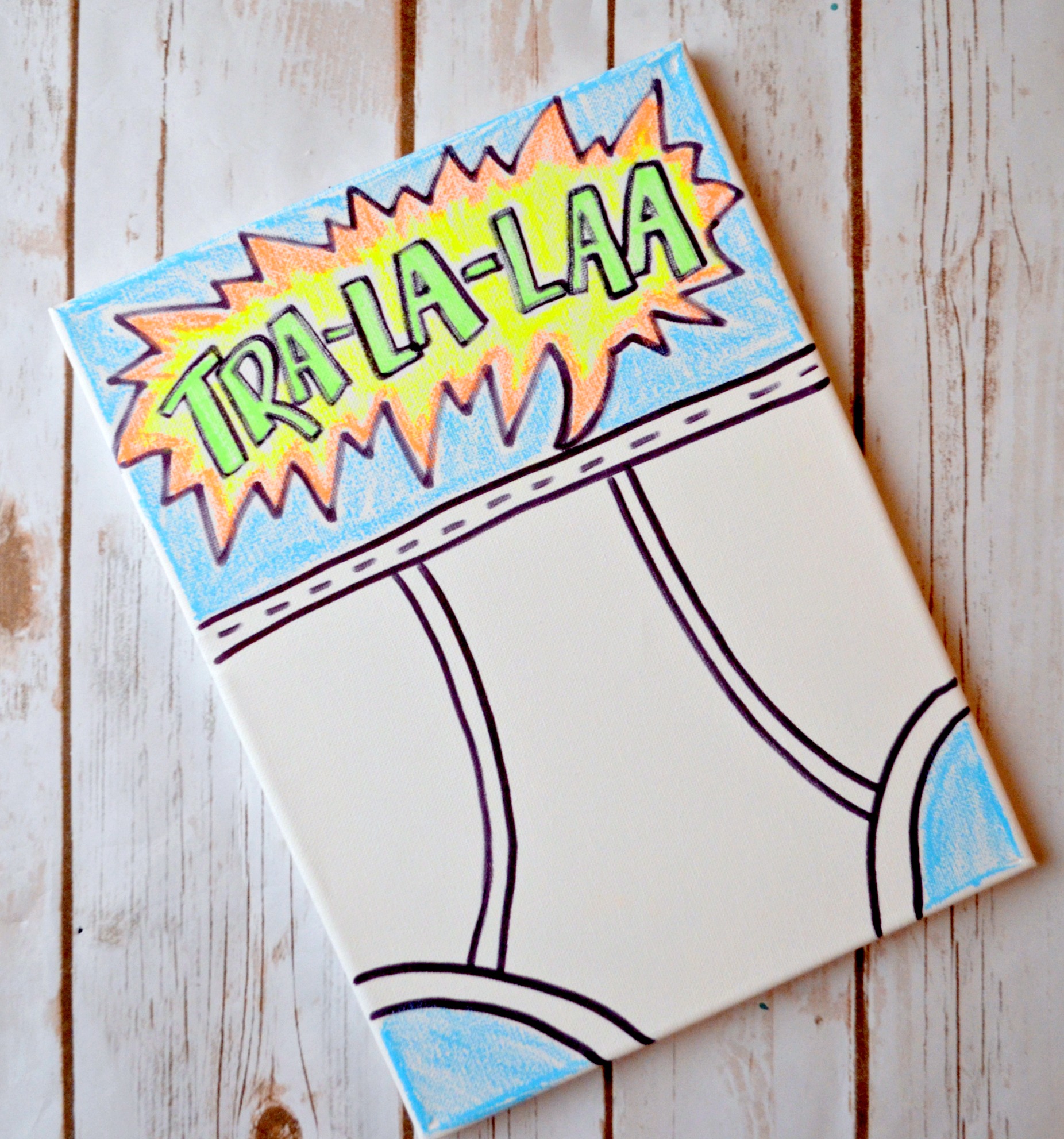
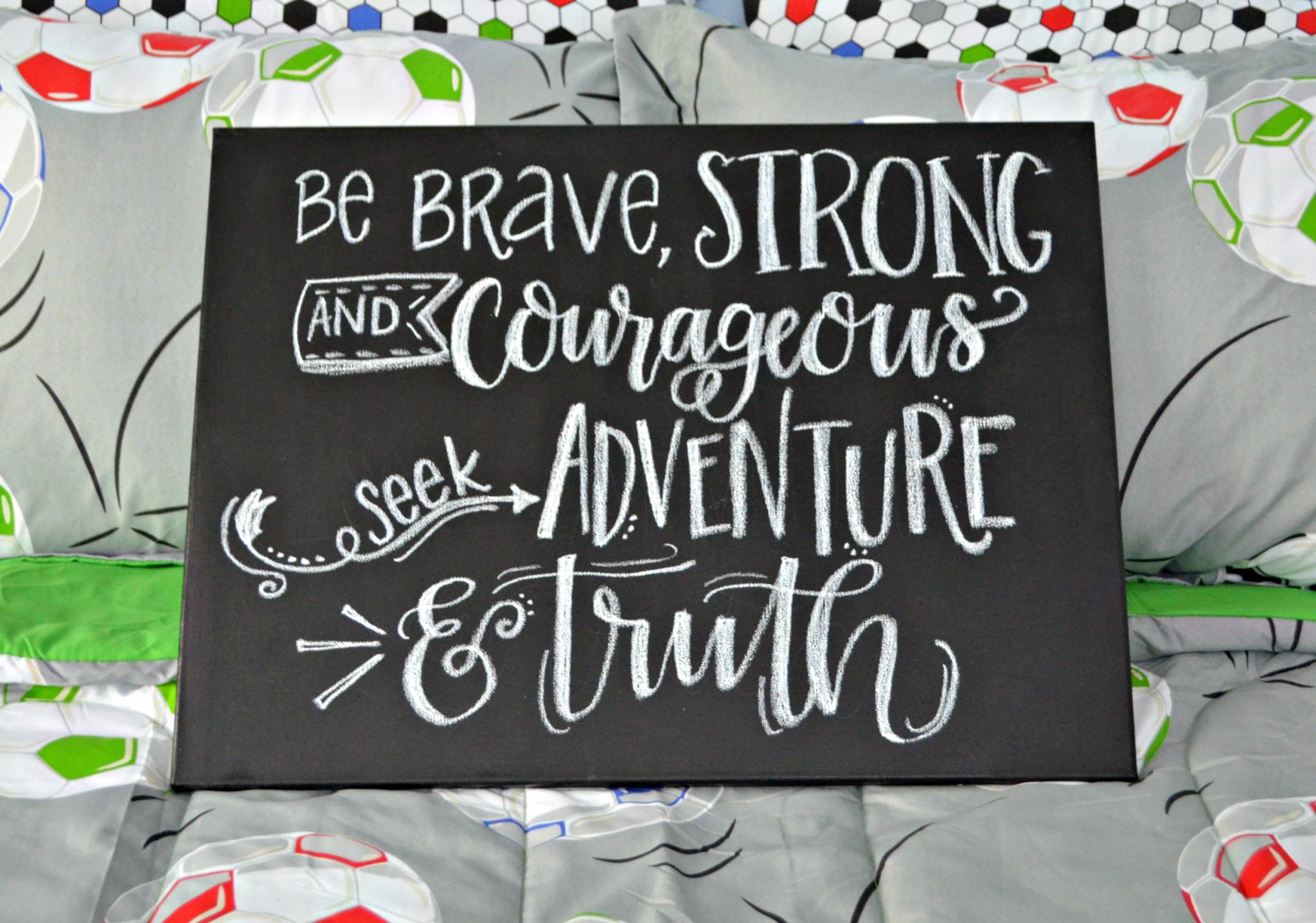
BISTRO CHALK MARKER by MARVY UCHIDA
Liquid chalk gives you the total control of a paint marker but with a matte, chalky finish.
THE FACTS:
Available in 15 colors.
Removable with a damp cloth.
Available in 3mm and 6mm bullet tip as well as ‘jumbo’
WORKS WELL ON:
chalkboards, light boards, windows, windshields and most non-porous surfaces including painted wood/canvas
PROS:
Liquid chalk gives the look of chalk without the mess and allows you to create fine, precise lines.
Marker tip makes it very easy to control.
Erasable – perfect for chalkboard projects you want to change from time to time.
CONS:
Can smudge or smear if someone rubs it. My projects on the wall have been fine, but if you have small kids or the project will be touched/handled often, I would use a permanent paint marker instead.
CERAMIC MARKERS
PAINTED BY ME CERAMIC MARKERS
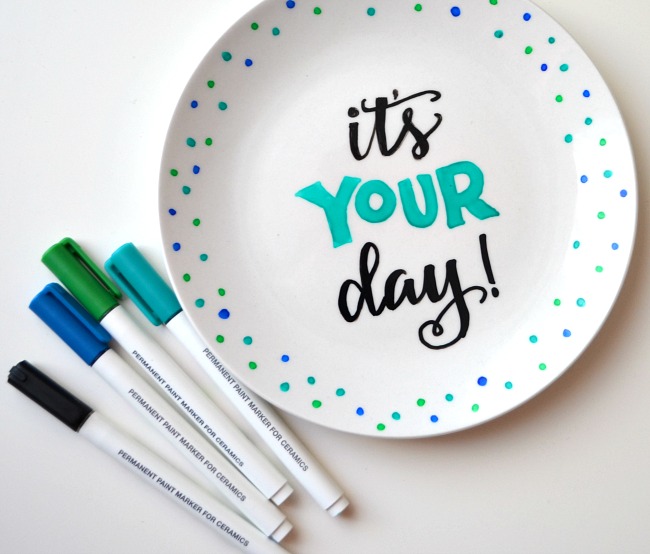
If you want to create lettered art on plates, cups, and other dishware that will actually be used, these are the ONLY option I’ve found that is actually permanent and not just non-toxic but FOOD SAFE. There’s a difference! With all other markers, while you can use them on glass and bake/cure them, the design should be kept out of direct contact with your food and/or mouth.
THE FACTS:
Available in 13 colors including metallics.
Sold individually.
Bullet tip
WORKS WELL ON:
ceramic, glass, dishware
PROS:
Uniquely designed for writing on glass and glazed ceramics.
Dishwasher & microwave safe!
FOOD SAFE!
Can be cleaned off the surface up until you bake it, so you can correct any mistakes.
Easy to use/control
Lots of color choices, colors are vibrant on light colored dishes
CONS:
Not sold in stores, can be hard to find some colors except on ilovetocreate.com.
Expensive from third party sellers {less $$ ordered directly from ilovetocreate site: $4.99 per pen}.
May rub off if curing directions are not followed exactly.

Well, there you have it! I hope you’ve found something that will work for whatever your next lettering project may be! As you can see, there is no “one right pen” to use all the time; instead you should ask yourself a few questions about your project to help you choose a good tool.
What’s my surface?
Do I want a permanent or erasable design?
Do I need a specific color?
What’s my budget?
Do I need the pen today or can I wait to order it?
There are many other options out there, I have just chosen to talk about the ones I personally use on a regular basis so that I can tell you about them firsthand. I’d love to hear about any of your favorites that I haven’t mentioned. This post does contain Amazon affiliate links, so if you happen to click on the product name and then purchase a pen or two, a small part of your purchase will help to fund the work I do here at One Artsy Mama at no extra cost to you. For a full list of my favorite pen and lettering supplies, be sure to check out my Amazon Associates page where I’ve rounded them all up in one place for you!
Happy Lettering!
Want to save this post for future reference? Why not PIN IT?
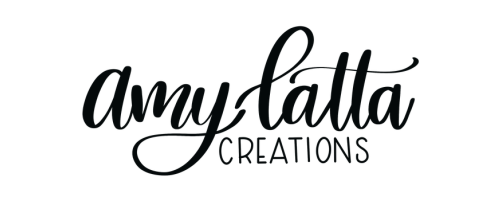
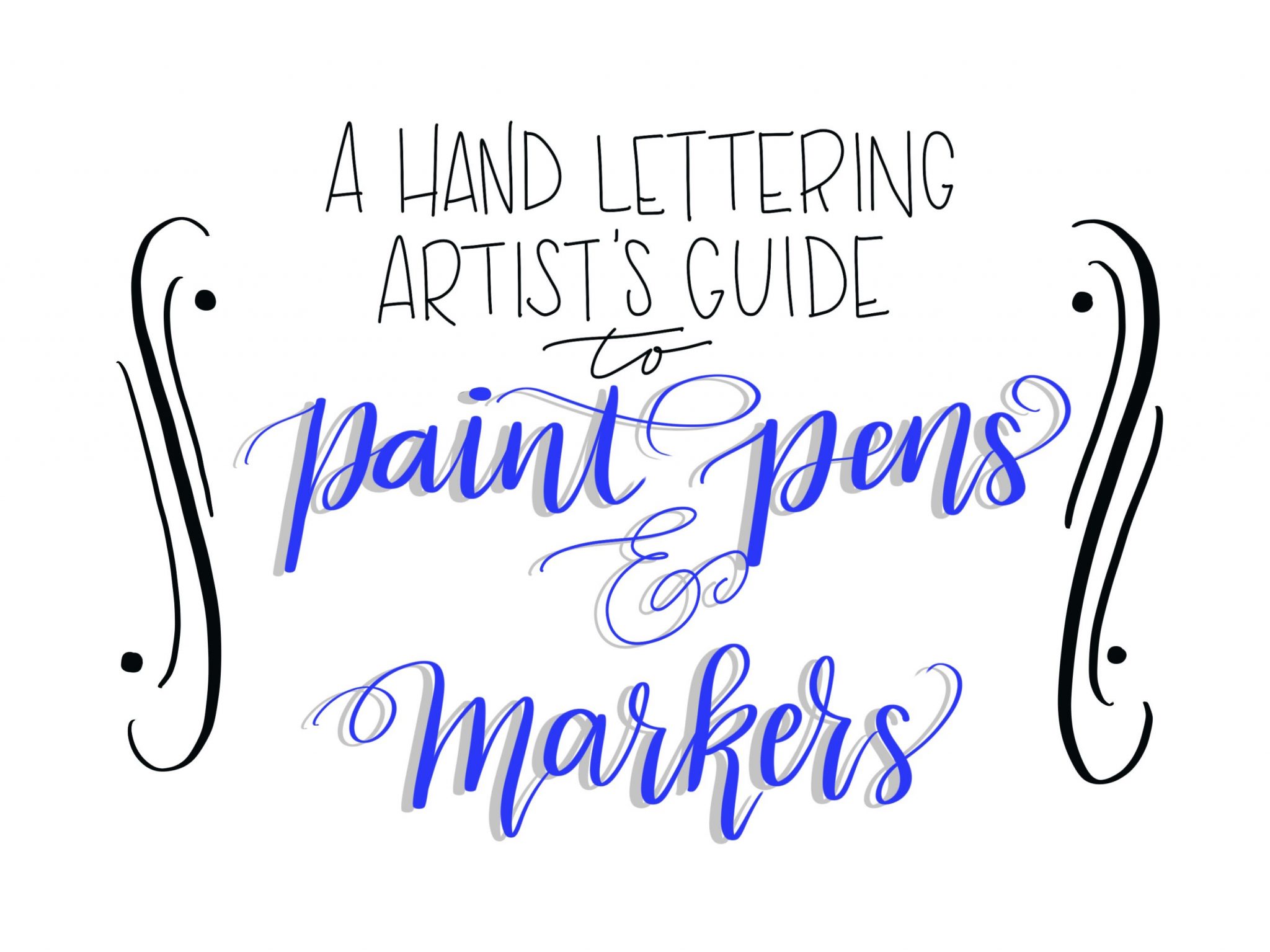
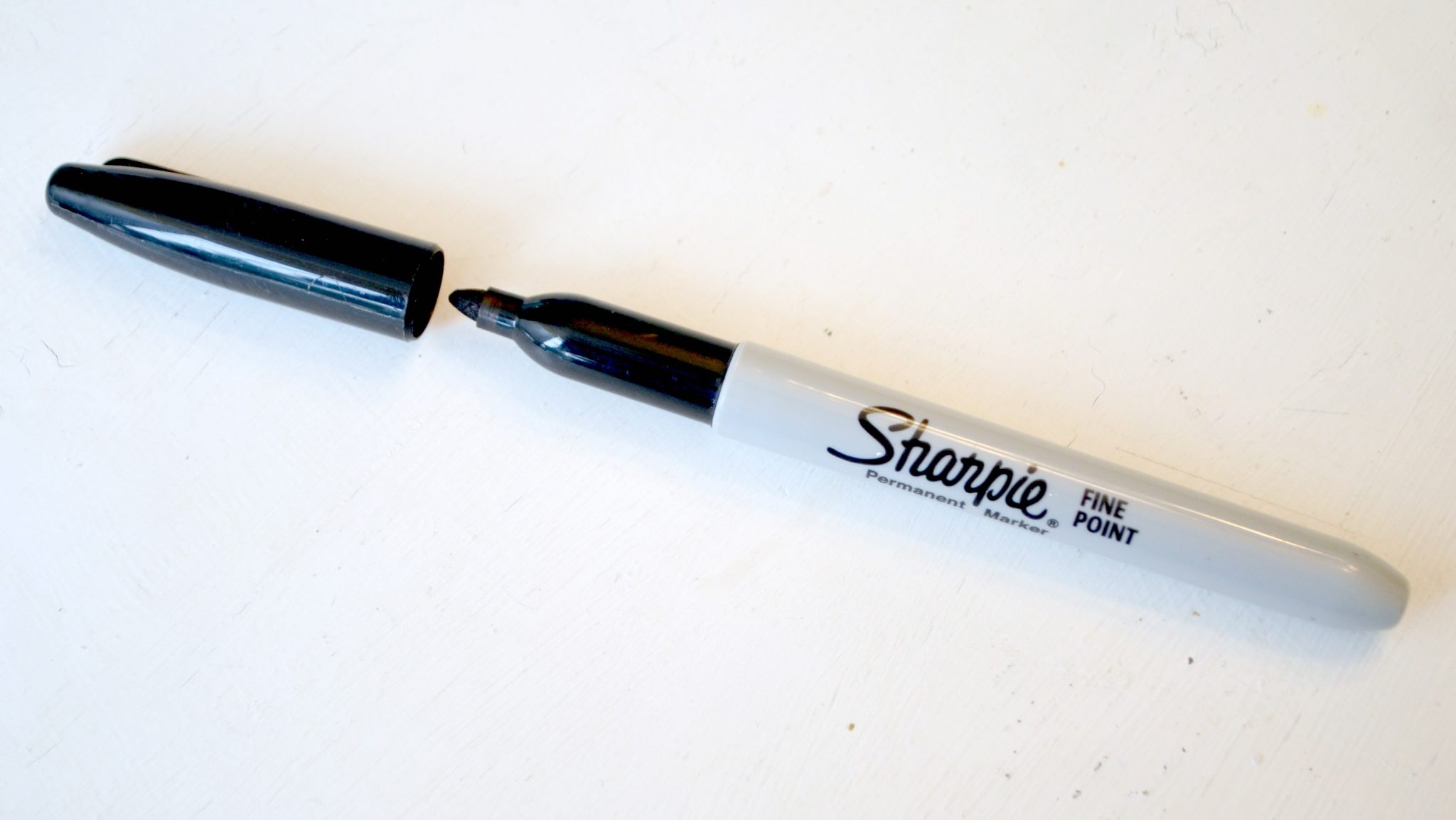
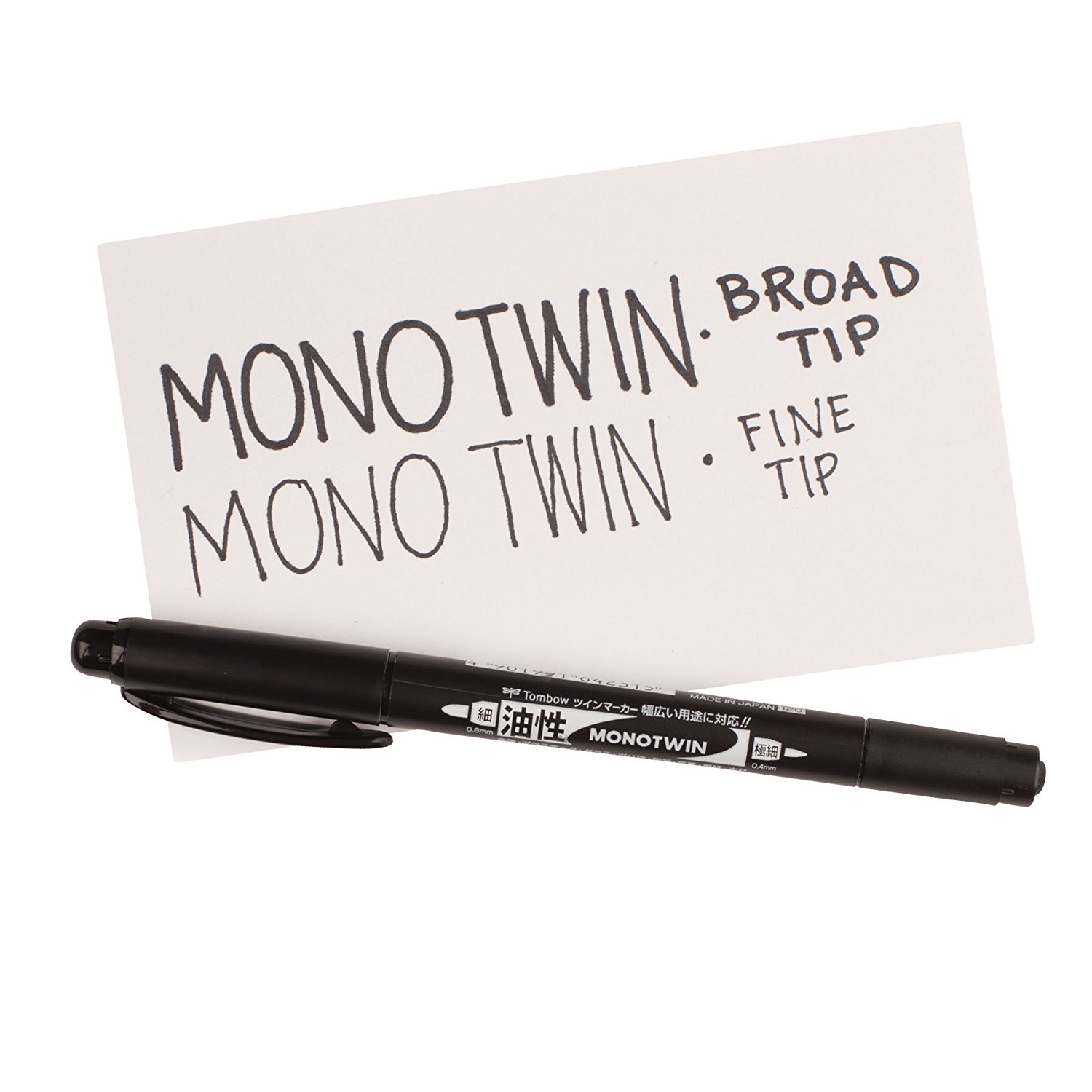
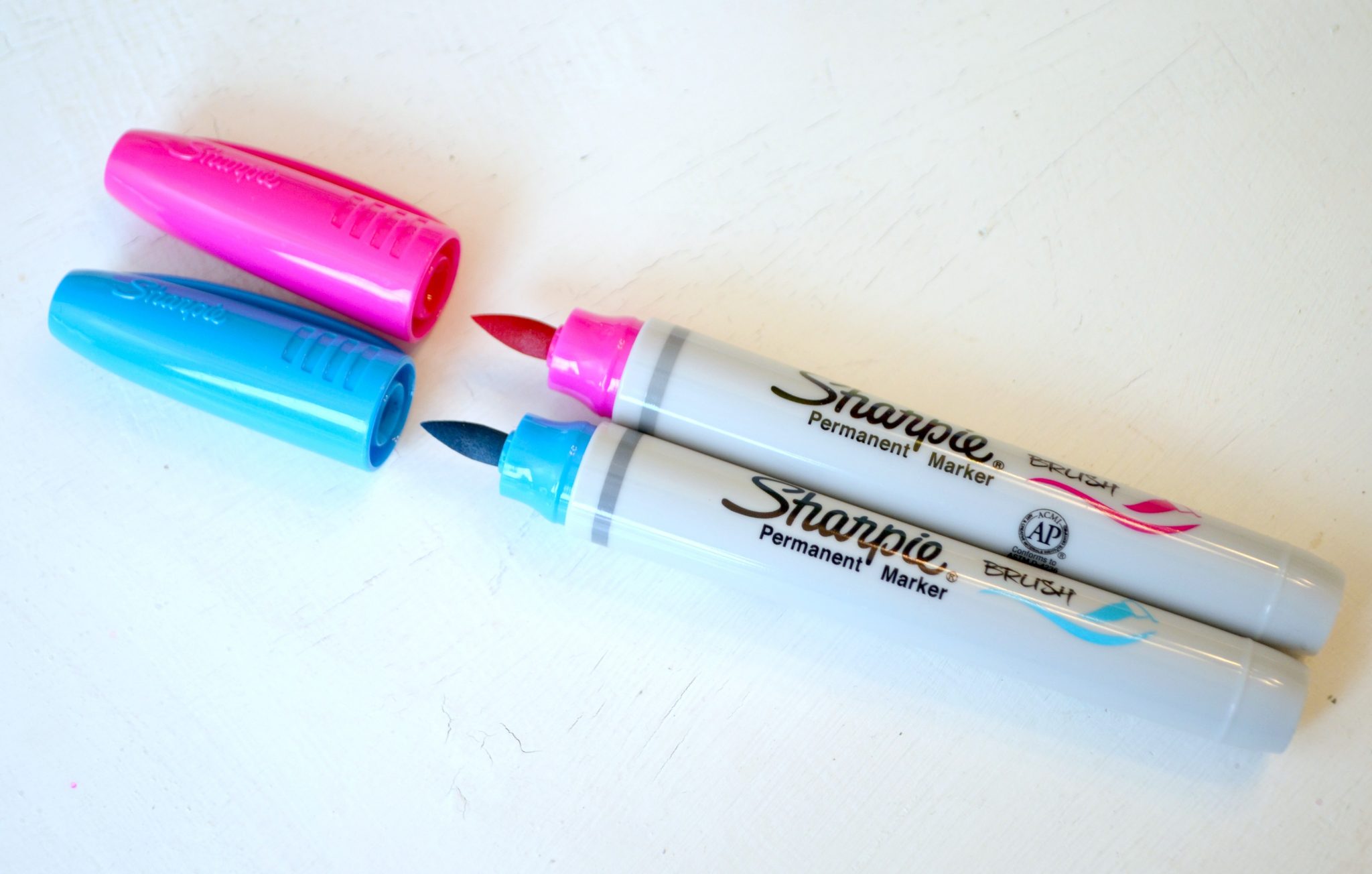
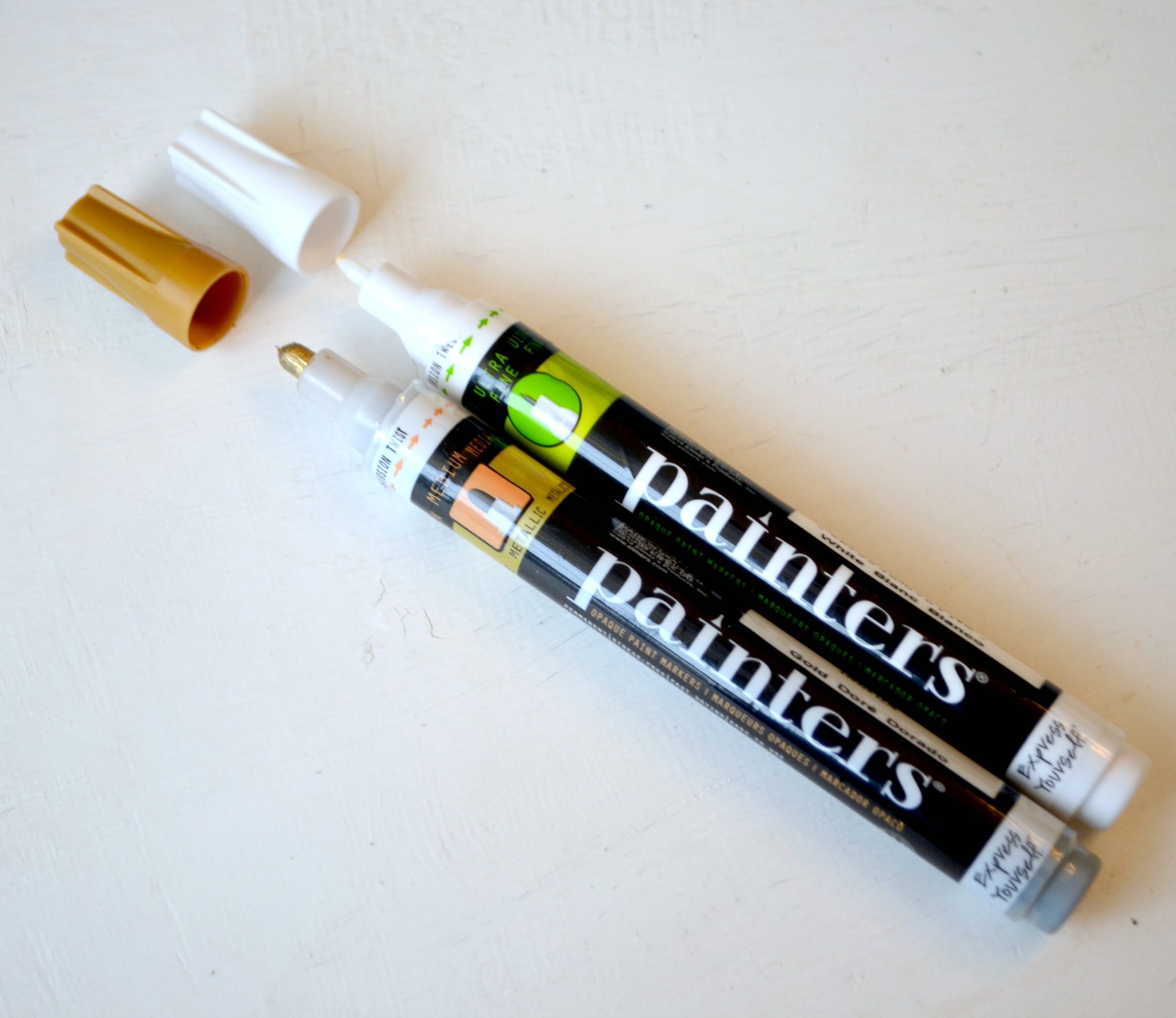
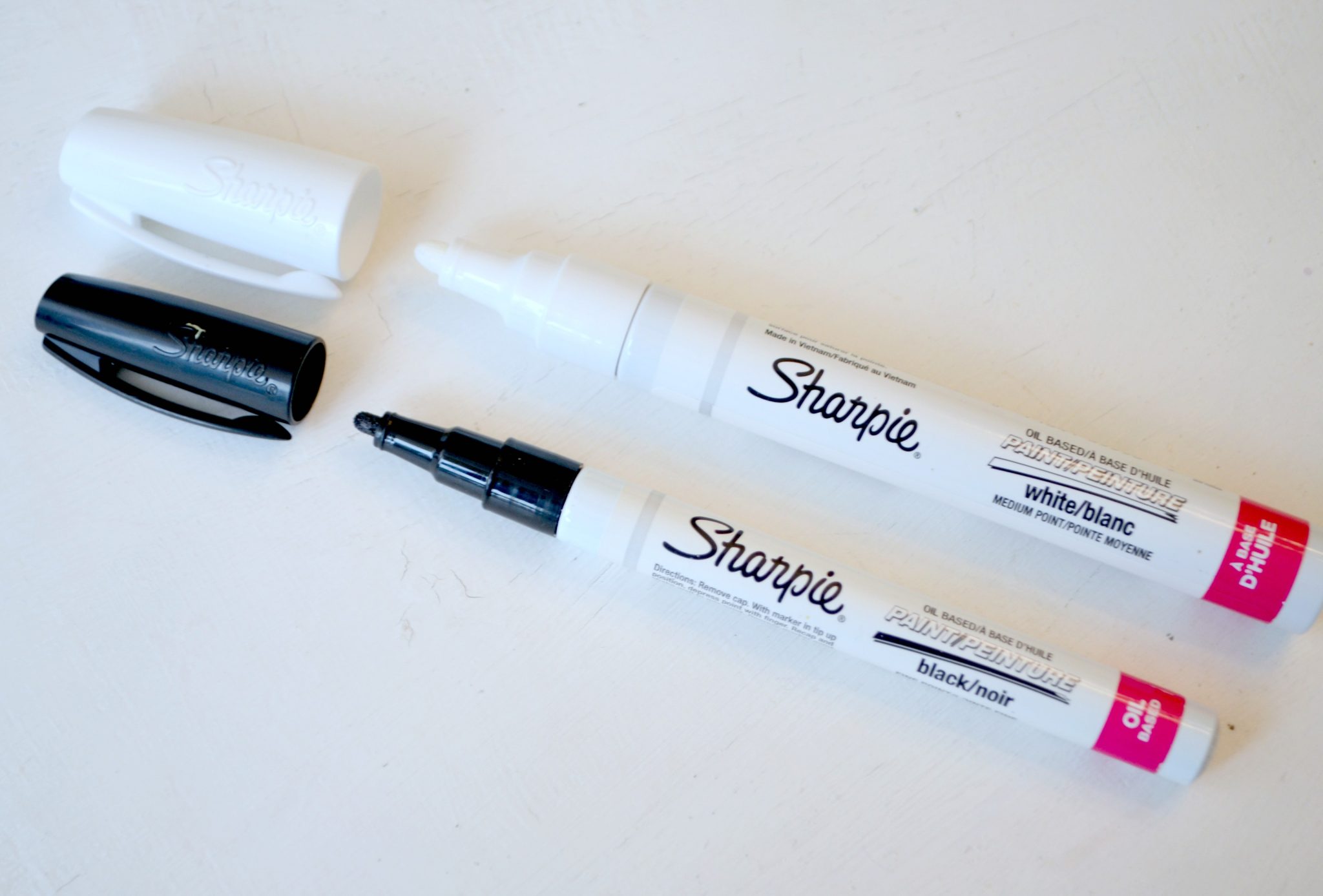
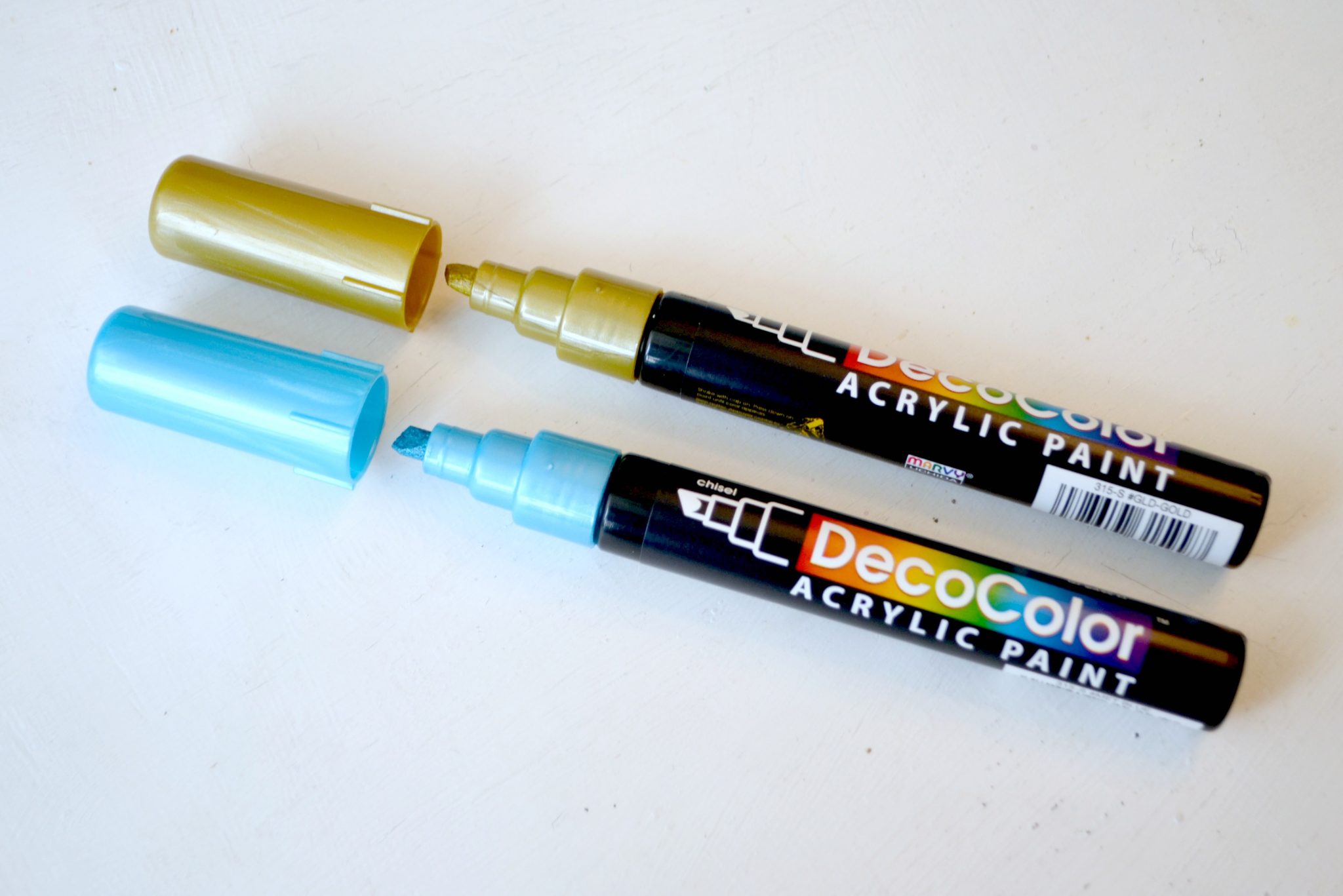
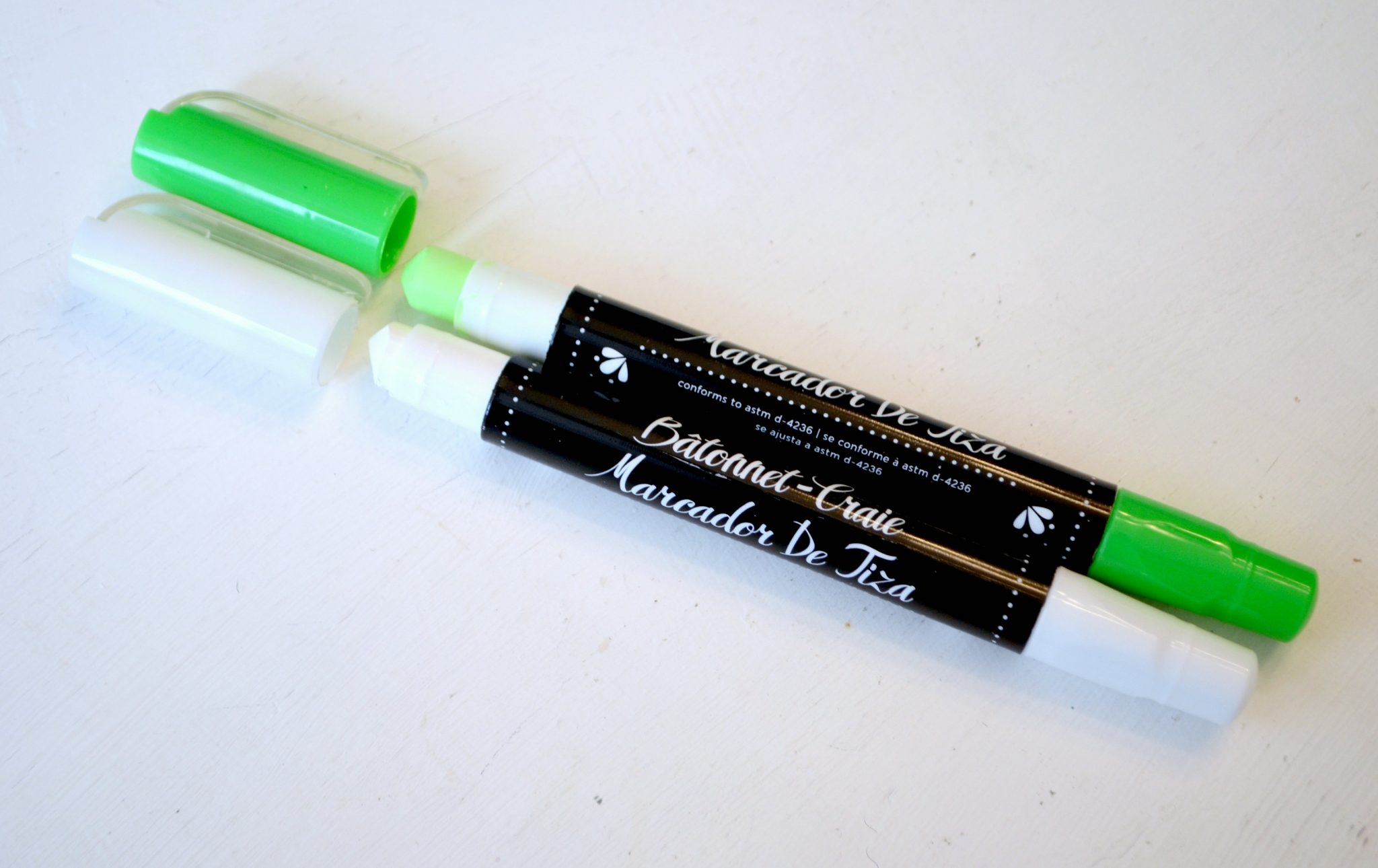
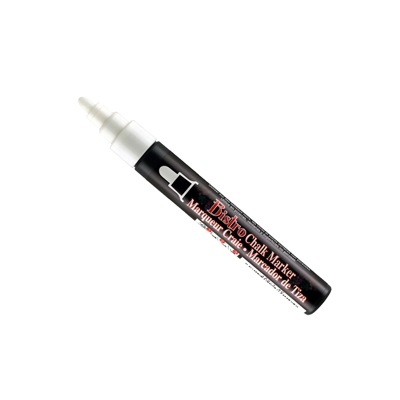
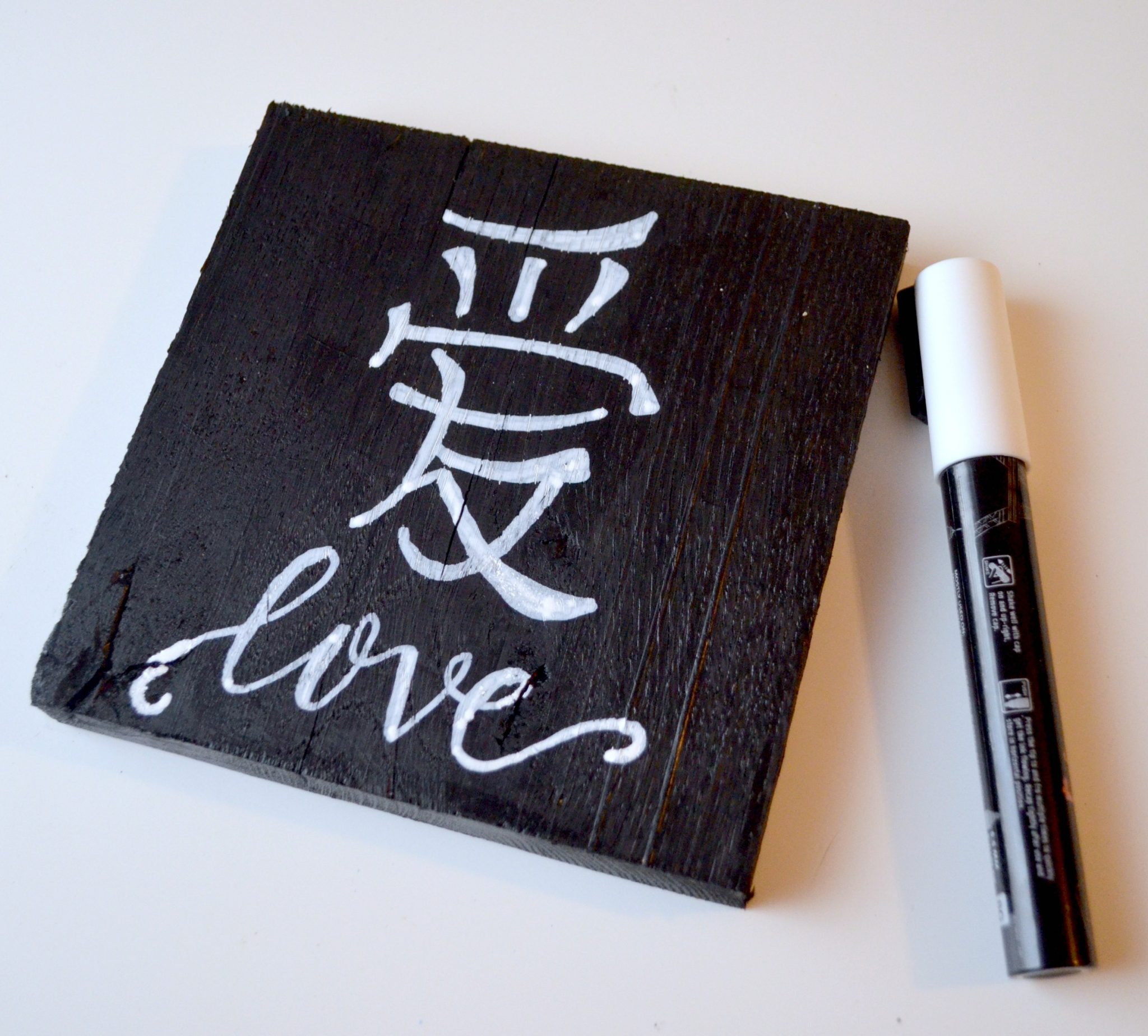
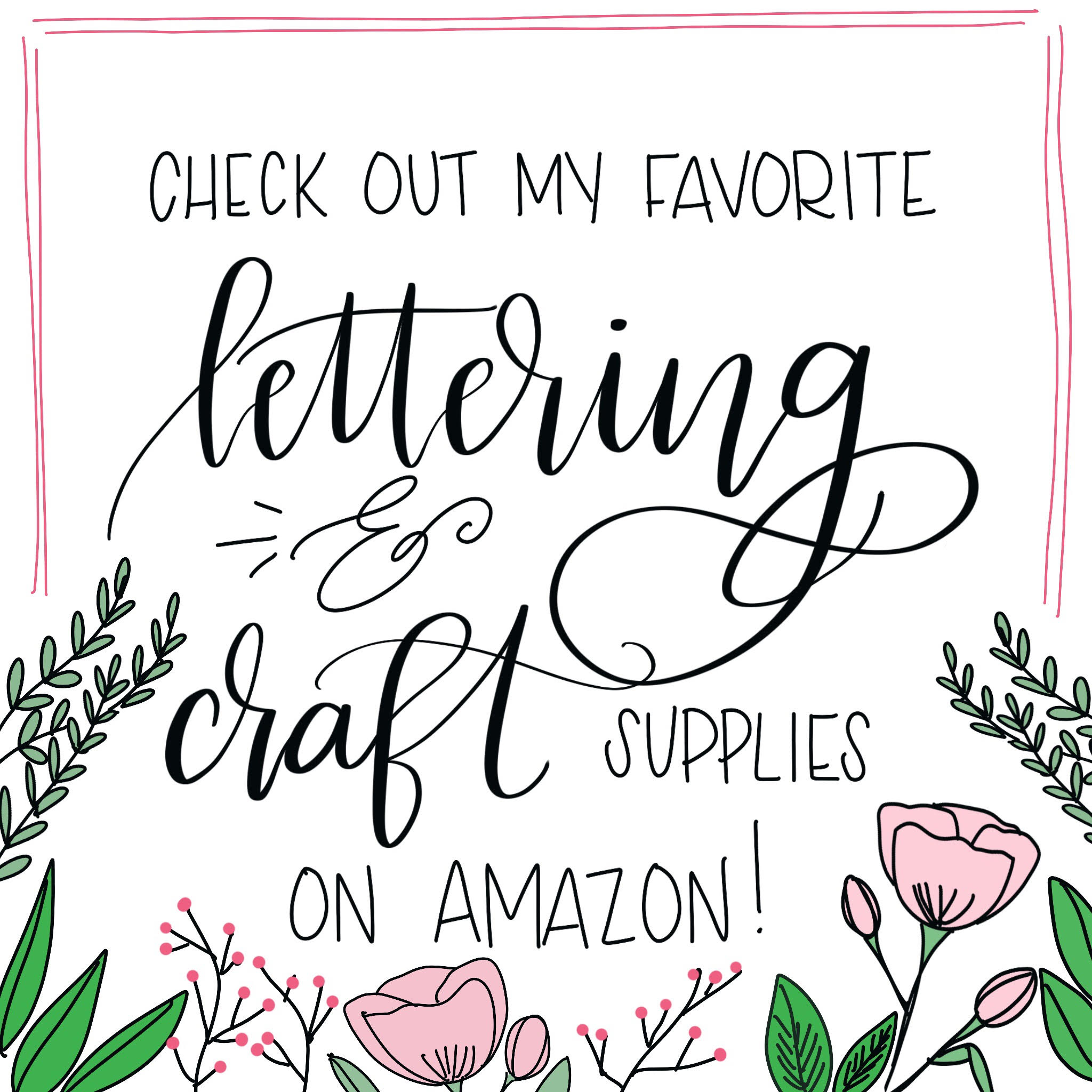

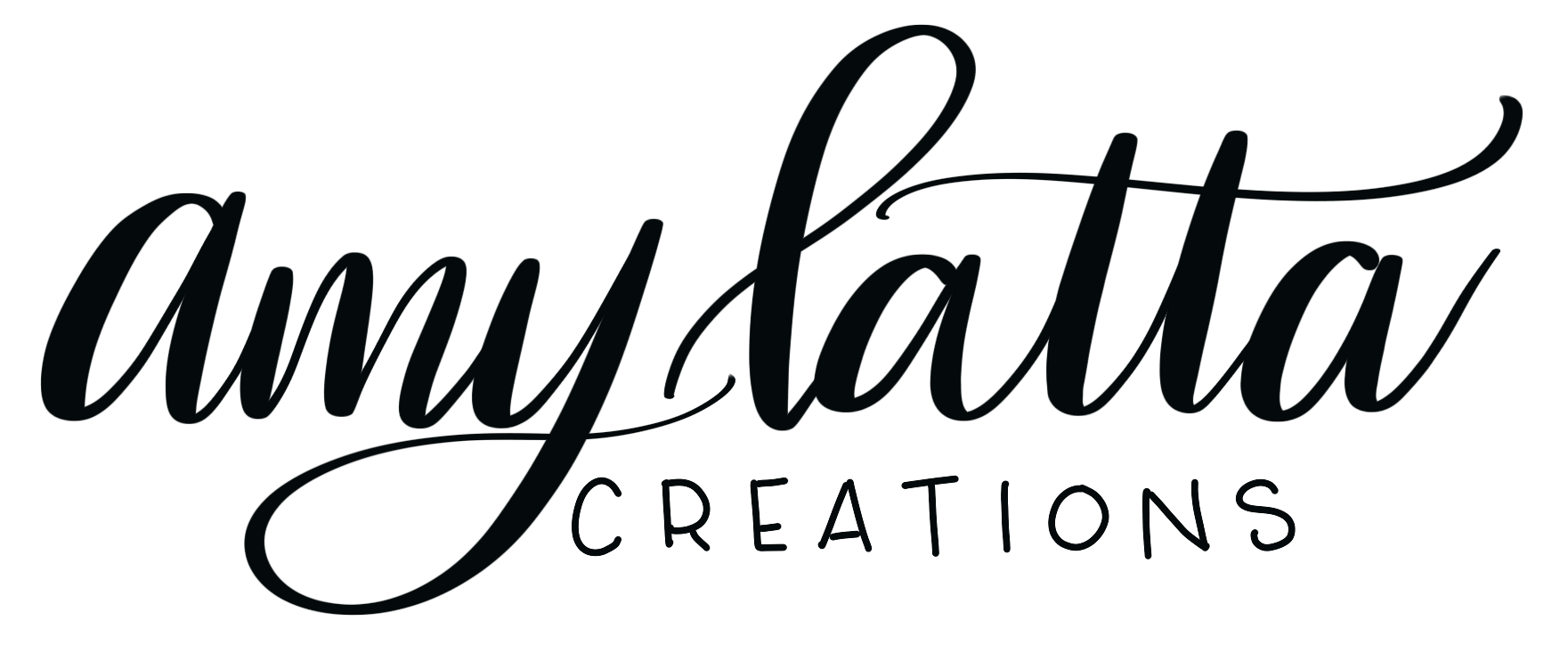
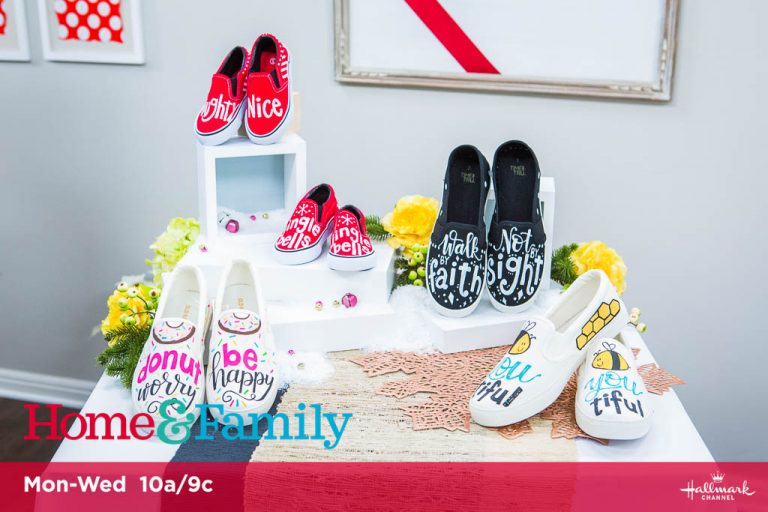
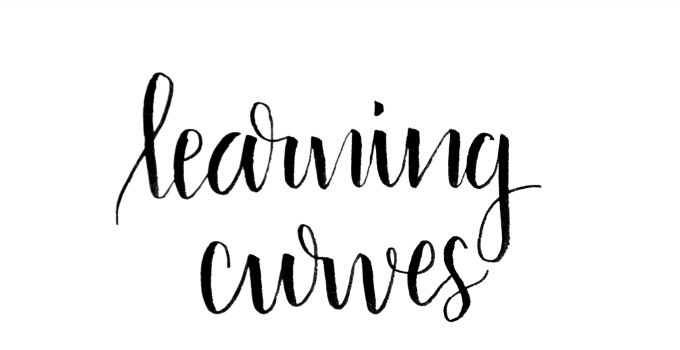
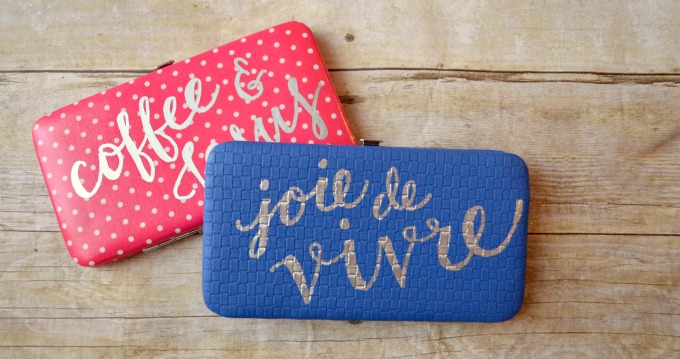
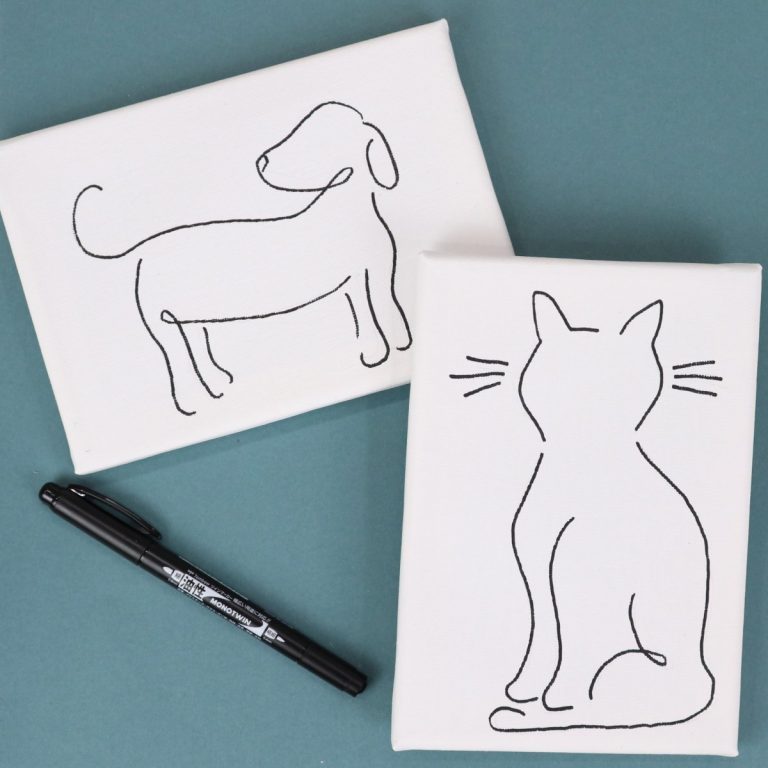
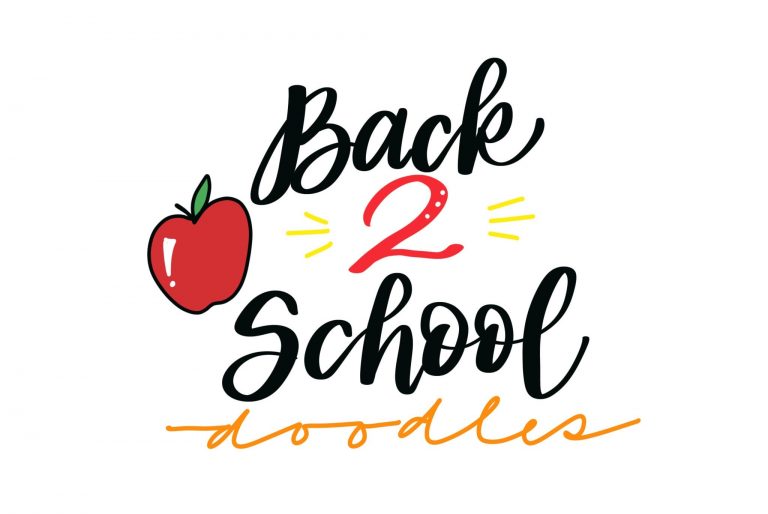
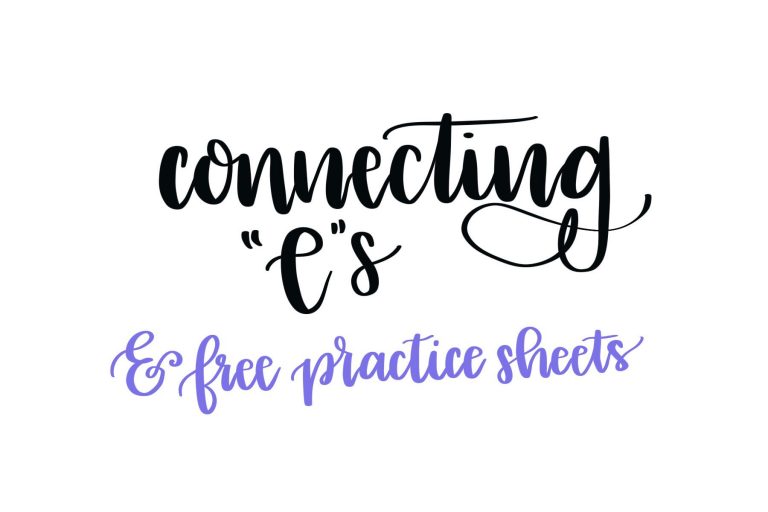

I am doing a sign on a black canvas that needs to have many bright colors. Can you please let me know what type of pen/marker you would use or type of paint? Thanks
The neon colored chalk pens I shared in this post would work well.
I am doing a grow chart on canvas and need a pen that is colourfast, thin tipped and doesn’t bleed. Can you recommend one that is suitable? THANk you Kate
I think you’d be good with either an Elmer’s Painters Paint Pen or a Sharpie Paint Pen.
Hi Amy, I’ve repainted an item with chalk paint and I want to do some fine white lines on it. I want to be able to use chalk paint varnish over the top. I have white chalk paint, but find I can’t paint a thin enough line. Any suggestions?? Thanking you in advance! Love your work.
My best suggestion would be to look for a fine tip chalk marker or white paint pen!
I’m planning to use Jenga block as my wedding guestbook. I’m not sure which pen I should use for writing on this type of wood.
I’d use a paint pen, like the Elmer’s Painters or a Sharpie Paint Pen.
What kind of paint pen would be best to use on an acrylic wedding sign?
Try an Elmer’s Painters pen or a Sharpie paint pen!
Hello,
Thank you so much for this information! Extremely helpful!
I am going to be writing on acrylic coasters for my sisters wedding but I want to make sure the names do not smear and remain permanent. Do you think the sharpie paint pen is best? Or what is your recommendation?
Thank you!
I think a Sharpie oil-based paint pen, then seal them with clear Mod Podge or another sealer spray.
Thank you for providing so much detailed information! I want to use indoor wall paint to paint tempered hardboard and will then write on that. What would you recommend as the best pen for a clean, well-made look? Making a sign for wall decor.
Thank you so much!!
What kind of indoor paint…satin? Matte? Semigloss?
Thank you for the response… Just a flat white
What is the main difference between Acrylic and Oil based paint markers?
The different types of paint are better for different surfaces: https://willkempartschool.com/what-is-the-difference-between-oils-vs-acrylic-paints/
Hello – what paint pens (or any thing like that) work best on acrylic panels/sheets? trying to make a wedding sign and most paint pens are sliding off of the acrylic or not showing up well (especially for a wedding where i want the presentation to be on point) thanks so much!!!!
Are you using water-based or oil-based pens? I’m thinking oil would possibly work better. If none of them are doing the trick, try a regular Sharpie or other permanent marker.
This was such an amazing blog with the pros and cons of every product. Really looking forward to your next post.
Seeing your interest in art pens, I would recommend you to use Cedar Markers as well. They are amazing and you will love it!
I haven’t heard of those; I will have to check them out!
Wonderful article! Very well written, by a true creative artist. I love how helpful this was. I think I’d like to try the deco art marker paint pens for some rock painting. Also, I learned quite a bit of information I wasn’t even looking for. I am so greatfull for you. I adore your beautiful pieces of artwork as well. You did great! Keep it up. ❤️
Your post very useful for me. I like painting on porcelain cup so this markers maybe can useful for me. Thanks for writing this post!
I recently bought Sharpie Oil-Based paint markers. I love the vividness of the colors. Even when working with a glossy and dark surface like metal, the ink colors still pop and stays vivid. Other markers tend to get washed out when the surface is already reflective but I did not experience that problem with these markers.
This is such a great resource for choosing pens! I wish I had seen it a few months ago. A friend of mine lettered a framed chalk board with the the menu I had done for my daughter’s backyard wedding. It turned out beautifully. She used a chalk pen, liquid, I think. If you rub the lines it will rub off. I’d like to keep the lettering and use the board as decor in my kitchen since it is a wonderful memory combination of my friend’s lettering, and my menu plan and cooking for my daughter’s wedding. Is there something I can seal the board with to prevent it from getting smudged or erased? I thought about Krylon or some other acrylic finish, but am afraid it may mess up or dissolve the lettering before it drys.Any ideas? Thank you!
I would try a clear acrylic sealer, but before spraying it on the actual project, I’d test it on something first. I’d just grab a really cheap chalk board from the craft store, write on it with the chalk pen and spray it to see what happens!
Thank you. Unfortunately I don’t have the pens she used and don’t know what kind they are. I’ll try to find out from her and do a test. Thank you for your reply!
The fact that these Artistro paint pens for wood signs are so vibrant is one of my favorite features about them. Even the white wood paint pen stands out. I tested these pens on a variety of surfaces, including glass and ceramic, and they performed admirably. All of them look great. The fine point and medium point choices for this collection are available.